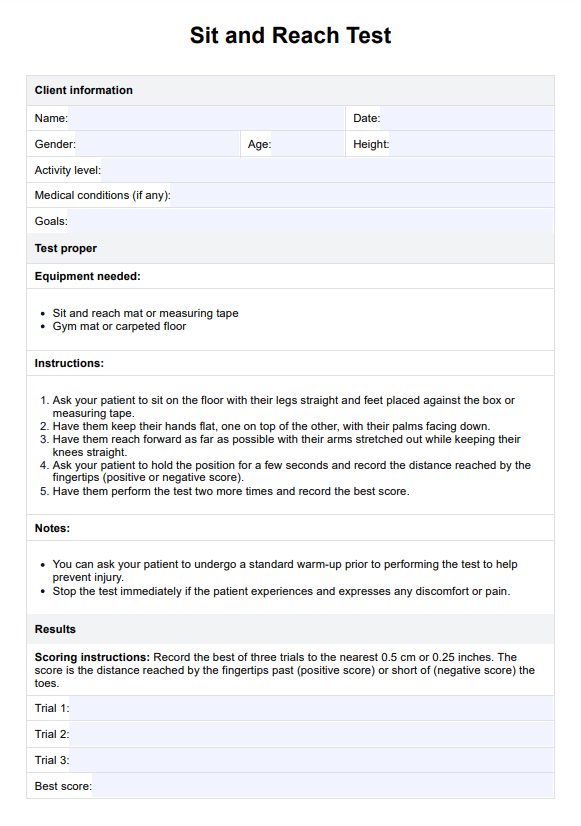The Sit and Reach Test is straightforward to use. Simply print out the test and follow the instructions provided. Make sure to record the client's best score and compare it to norms for their age and gender.

Sit And Reach Test
Assess a patient's lower back and hamstring flexibility using the Sit and Reach Test.
Sit And Reach Test Template
Commonly asked questions
Yes! The Sit and Reach Test is often provided in a downloadable format, such as a PDF or Word document, allowing you to customize it to fit your needs. You can add your logo or adjust the layout to suit your practice or organization better.
The Sit and Reach Test can be used on individuals of all ages, from children to older adults. However, norms for the test vary based on age and gender, so it's essential to use appropriate references when interpreting the results. It's also important to consider any medical conditions or limitations affecting an individual's ability to perform the test.
EHR and practice management software
Get started for free
*No credit card required
Free
$0/usd
Unlimited clients
Telehealth
1GB of storage
Client portal text
Automated billing and online payments











